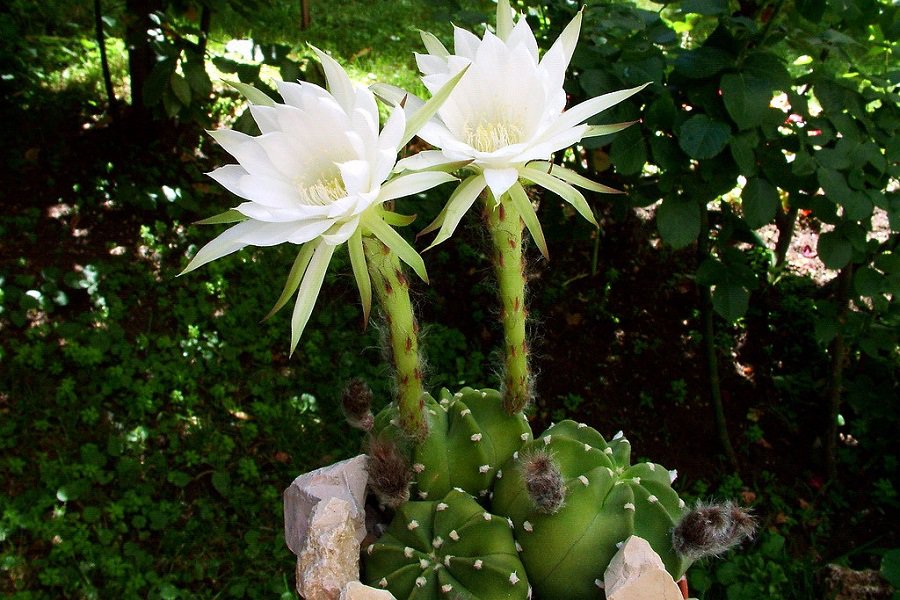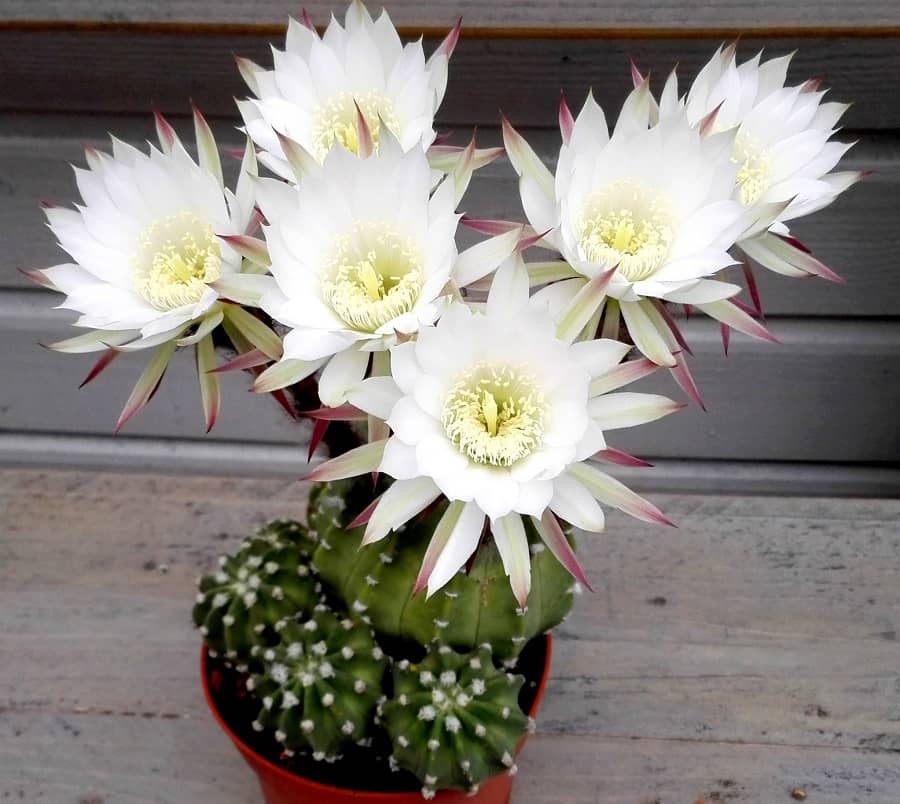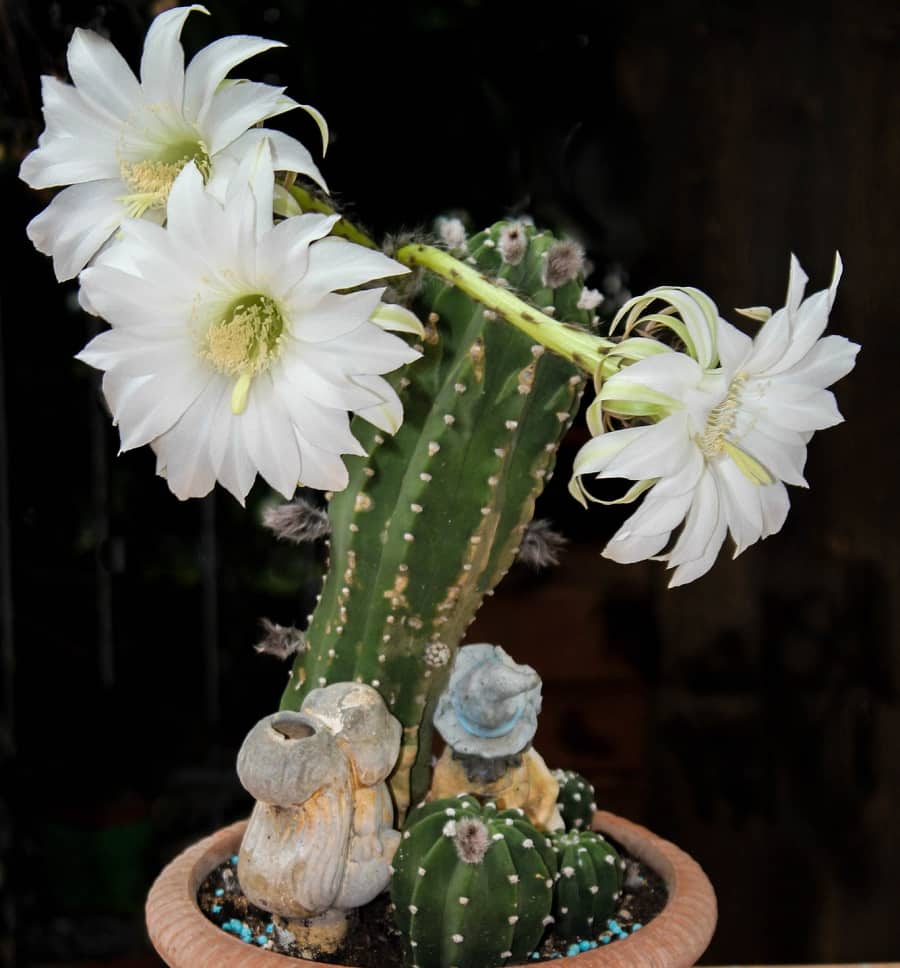Echinopsis subdenudata: Characteristics and Care
Picture a cute, round cactus that fits perfectly in your palm. That’s the Echinopsis subdenudata, a charming little plant with a single green stem and barely visible spines. But don’t let its unassuming appearance fool you – this cactus packs a punch with its beautiful white, fragrant flowers that bloom in spring and summer.
Caring for this cactus is a breeze. It loves basking in bright sunlight and doesn’t need frequent watering. In fact, overwatering can be its worst enemy. All it needs is a well-draining soil mix, and it’ll thrive, making it an excellent choice for both beginners and seasoned plant enthusiasts.

Related Post:
82 Types of Echinopsis With Pictures
Contents
Echinopsis subdenudata Care Guide
The Echinopsis subdenudata cactus comes in various shapes and sizes. Due to hybridization, these plants can even have flowers of different colors on the same cactus!
Most cacti bloom only once a year, but the Echinopsis subdenudata can flower all year round if the temperature stays above 70°F (21°C). But for that to happen, you need to take proper care of your plant. Here’s how:
Light
All plants love sunlight, and the Echinopsis subdenudata thrives in the summer sun. However, too much sun can burn your cactus. Keep an eye out for discoloration on the edges of the plant. If you notice any signs of sunburn, reduce the sun exposure and move the plant to a shadier spot.
Water
How often you water your cactus depends on the season. During the blooming summer months, your plant will need more water. As the temperature drops in fall and winter, the cactus becomes dormant, so you’ll need to water it less.
The watering frequency also depends on the soil, pot design, and size. Pro tip: Stick a pencil into the pot to check if the soil is dry. If the pencil comes out dry or with very little moisture, it’s time to water your plant.
When watering, make sure to thoroughly soak the entire pot until the soil is saturated.

Soil
The Echinopsis subdenudata cactus needs fast-draining soil. Waterlogged soil can harm the roots and even kill the plant. Add pebbles to the soil to improve drainage, and use sand to create a fast-draining top layer. These cacti have shallow roots, so the pot size doesn’t matter much.
If you plan to grow your Echinopsis subdenudata in the ground instead of a pot, be extra careful with watering. While planting it in the garden won’t harm the cactus, it does have some downsides. For example, if the temperatures in your area drop very low, the water in the cactus can freeze. If your cactus is in a pot, you can move it indoors to prevent this. But if it’s planted in the ground, there’s no way to avoid it.
Fertilizer
You can fertilize your Echinopsis subdenudata two or three times during its growing season. Use a liquid fertilizer with a balanced ratio of nitrogen, phosphorus, and potassium, as this is ideal for cacti. Avoid fertilizing during the dormant period.

Pests and Diseases
Fortunately, the Echinopsis subdenudata cactus is not prone to many pests or diseases. Its main enemy is root or stem rot, which is caused by excessive water retention. Make sure your pot has proper drainage and that you don’t overwater your plant.
Echinopsis subdenudata Propagation
Step 1: Look for offsets (new growth) clustered at the base of your Echinopsis subdenudata plant. Wait until they grow to at least an inch long before cutting them off.
Step 2: Cut the offsets at the narrowest point, as close to the main plant as possible.
Step 3: Place the cut offsets on a paper towel and let them dry out until the wounds callus over (form a protective layer).
Step 4: Once calloused, plant the offsets in a fast-draining soil mix, similar to the one used for the parent plant.
Step 5: The offsets should take root and start growing in a few weeks. Once you see new growth, repot them into their own containers.
And there you have it! You’ve successfully propagated new Echinopsis subdenudata plants from your existing cactus.
